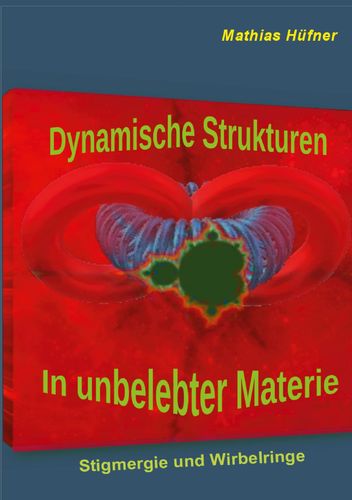Leider findet man so gut wie nichts über die physikalischen Vorgänge, die das Klima der Erde bestimmen, weshalb ich mal ein einfaches Strahlenmodell betrachte. Die Erwärmung kommt von der Energie der Sonne. Es stellt sich ein Strahlengleichgewicht zwischen Absorbtion und Emission ein. Unsere Erde ist ein Wasserplanet. Folglich wird der Wärmeaustausch zwischen Erdoberfläche und Troposphäre durch den Wolkenmantel bestimmt. Je nachdem, wie dessen Rückstrahlvermögen ist, erreicht ein mehr oder minder großer Anteil der Strahlung die Erdoberfläche.
Zum Thema Klimarettung
Umweltschutz Posted on 16. Mai 2023 16:38- Kommentare(0) https://blog.mugglebibliothek.de/?p=250
Über Macht und Wissenschaft – Ghada Chehade über Thomas Kuhn
Philosophie Posted on 5. Mai 2023 14:46Wissenschaft funktioniert nicht so, wie es der Normalbürger sich vorstellt, als eine stetige Weiterentwickung der Erkenntnisse zum Wohle der Menschheit. Schaut man gründlicher hin, stellt man fest: Es geht um Macht und Deutungshoheit, seltener um Wahrheit. Beherrschte bis in die Mitte des 20. Jahrhunderts der Glaube die Physik, hat heute diese Wissenschaft in der Klimakrise dem Großkapital zu dienen. Das bietet jede Menge an Konflikten und Umbrüchen als Paradigmenwechsel bezeichnet.
Gerade habe ich die SpaceNews von Ghada Chehade über die Krise der Kosmologie 2023 übersetzt, da finde ich auch ihren gesamten Aufsatz.
- Kommentare(0) https://blog.mugglebibliothek.de/?p=244
Leseprobe zu Dynamische Strukturen
Rezensionen Posted on 23. März 2023 13:01- Kommentare(2) https://blog.mugglebibliothek.de/?p=235
Meinung zu Dynamische Strukturen in unbelebter Materie
Rezensionen Posted on 23. November 2022 10:09
- Kommentare(1) https://blog.mugglebibliothek.de/?p=216
Zum dialektischen Materialismus
Philosophie Posted on 26. Juni 2022 18:48Die Sowjetunion war angetreten, um mittels der Ideologie des dialektischen Materialismus eine neue Weltordnung aufzubauen. Heute soll das Einflussgebiet der Sowjetunion zurückerobert werden.
War der dialektische Materialismus wirklich eine wissenschaftliche Methode oder nur die Fasade eines skrupelosen Machtmissbrauchs?
- Kommentare(2) https://blog.mugglebibliothek.de/?p=198
Zum Paradigmenwechsel in der Astrophysik
Glaube und Wissenschaft, Zukunft der Physik? Posted on 11. April 2022 13:10Ein Paradigma ist nach Thomas Kuhn ein Denkmuster, was den Mitgliedern einer wissenschaftlichen Gemeinschaft gemeinsam ist, und umgekehrt besteht eine wissenschaftliche Gemeinschaft aus Menschen, die ein Paradigma teilen. Auch wenn Wissenschaftler beginnen, den Glauben an eine Theorie zu verlieren und dann Alternativen in Betracht ziehen, verzichten sie nicht auf das Paradigma, das sie in die Krise geführt hat.
Ein Paradigmenwechsel ist daher ein sehr langwieriger Prozess, der von vielen Mythen und Irrtümern begleitet wird, ehe sich ein neues Denkmuster durchsetzt.
Gegenwärtig wird das Denkmuster einer symmetrischen Weltformel in einem geschlossenen von der Gravitation dominierten Kosmos durch das Denkmuster eines asymmetrischen Prozesses in einem offenen von elektromagnetischen Kräften dominierten Kosmos ohne die Bestimmung von Anfangsbedingungen abgelöst.
- Kommentare(0) https://blog.mugglebibliothek.de/?p=193
Velikovsky und Einstein
Glaube und Wissenschaft Posted on 5. März 2022 14:24In den Fünfziger Jahren des 20. Jahrhunderts hat Immanuel Velikovsky ein Buch unter dem Titel Welten im Zusammenbruch geschrieben, womit er einen riesigen Skandal ausgelöst hat, da er sich erlaubt hatte, die göttliche Ordnung des Kosmos in Zweifel zu ziehen. Velikovsky hat einen bemerkenswerten Briefwechsel mit Einstein über seine Ideen zum Kosmos geführt, der hier vorgestellt werden soll. Dabei ging es in der Endkonsequenz darum, ob der Kosmos von der Gravitation oder von der Elektrodynamik dominiert wird. Schließlich kamen Einstein in seinen letzten Lebensmonaten Zweifel an seiner Relativitätstheorie.
- Kommentare(1) https://blog.mugglebibliothek.de/?p=188
Modern Cosmic Myths
Elektrisches Universum, Glaube und Wissenschaft Posted on 18. Februar 2022 15:29The Saturn Myth: A Reinterpretation of Rites and Symbols Illuminating Some of the Dark Corners of Primordial Society is a book written 1980 by David N. Talbott which speculates that early humanity witnessed a much different celestial alignment. According to the book, Earth was a former satellite of Saturn before a hypothesized cataclysm, which caused the earth, Saturn, Mars, and Venus to lose their previous orbits. This hypothetische planetary configuration is called the polar configuration too. It was the door opener to begin engaging in the serious science of the Electric Universe. But would such a change in orbit of the planets be possible at all according to the laws of electrodynamics?
- Kommentare(5) https://blog.mugglebibliothek.de/?p=183


